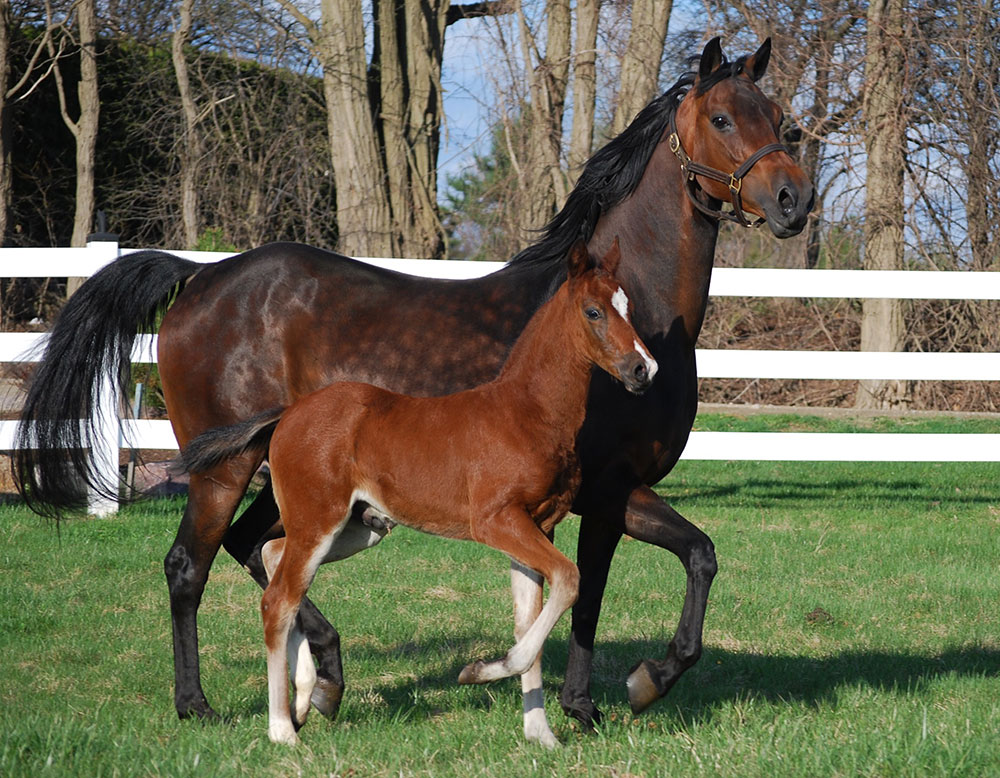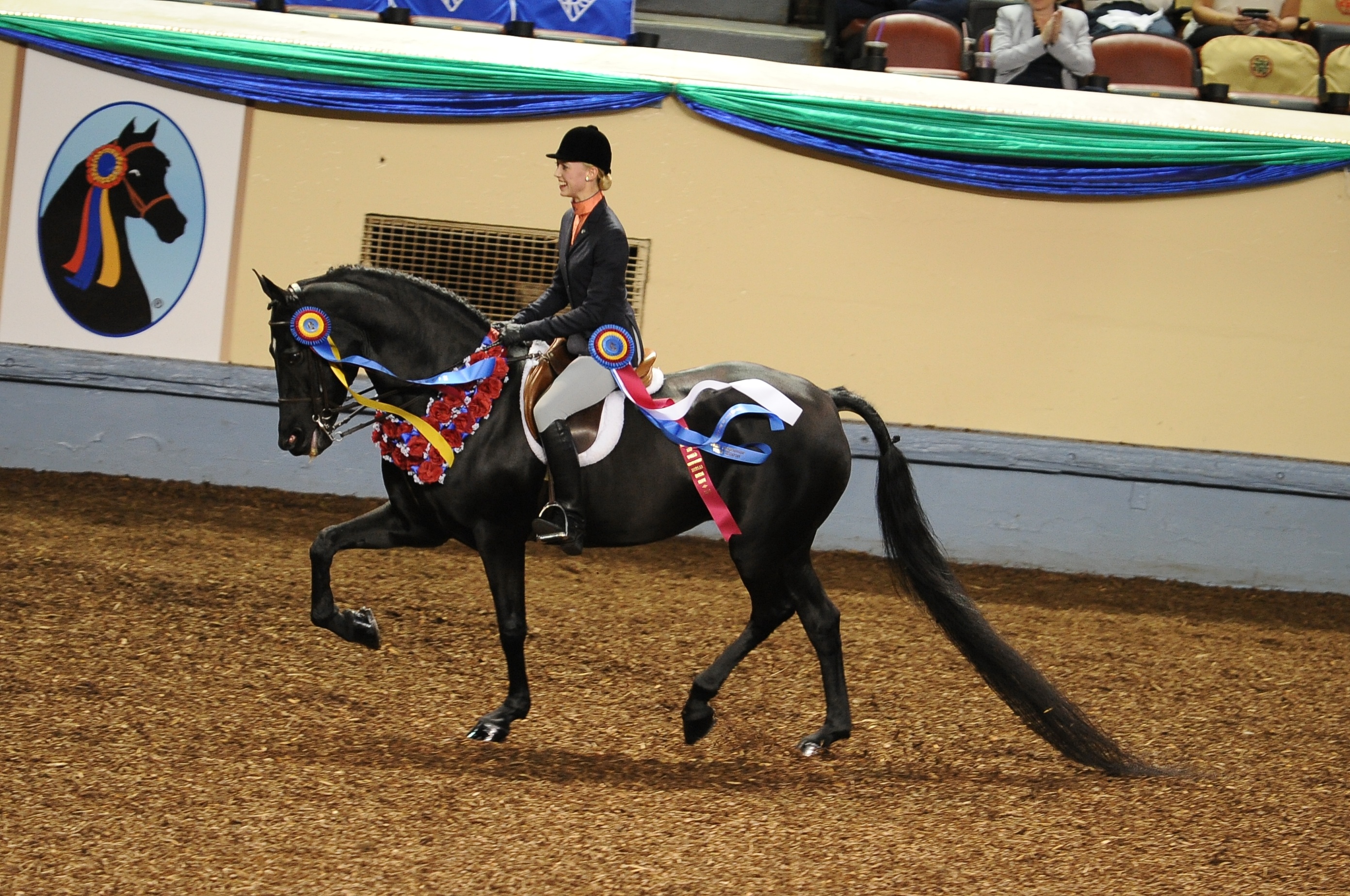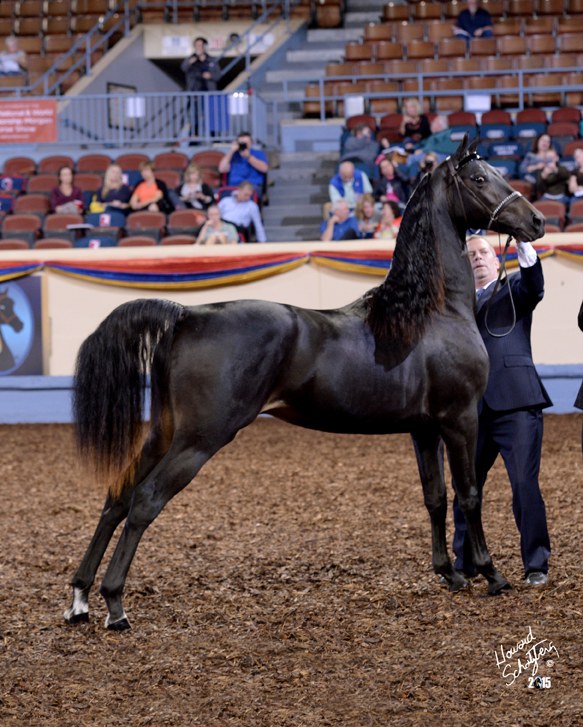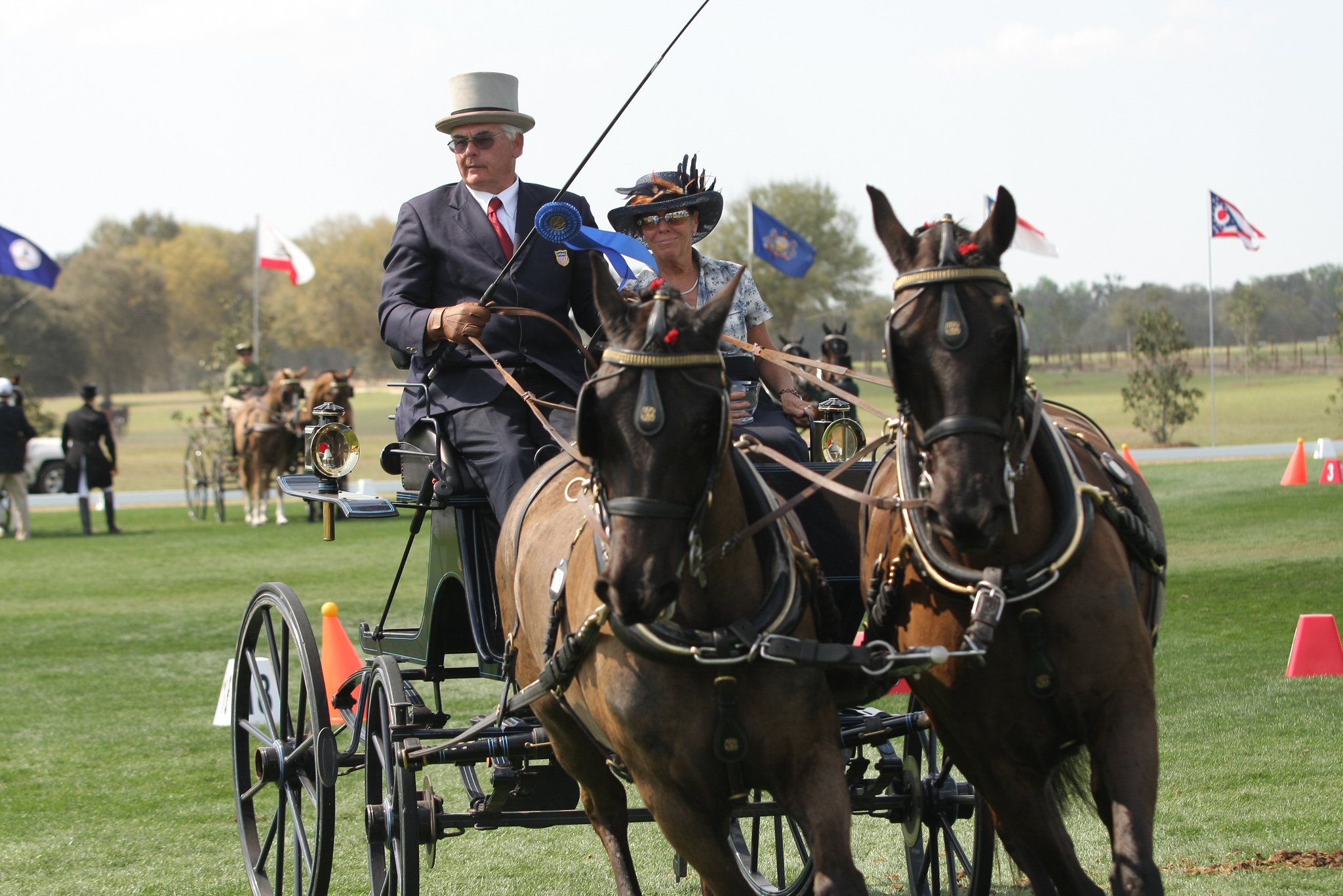
Courtesy of the American Morgan Horse Association
In 1789, George Washington became the first president of the United States and the U.S. Constitution was signed into law. That same year in Springfield, Massachusetts, a small bay colt named Figure was born. This colt was instrumental in building the new country and founded America's original equine breed, the Morgan.
The Morgan was the first recognized horse breed in the United States. It is the official state animal of both Vermont and Massachusetts. Other breeds have claimed existence in colonial times, but today only the Morgan can trace his bloodlines to a common ancestor. The Morgan has influenced other breeds, including Tennessee Walking Horses, Quarter Horses, Standardbred, and American Saddlebreds.
The Morgan horse is easily recognized by his proud carriage, upright graceful neck, and distinctive head with expressive eyes. Deep bodied and compact, the Morgan has strongly muscled quarters. His intelligence, willingness, zest for life, and good sense is blended with soundness of limb, athleticism, and stamina. In addition, Morgan thriftiness and longevity have made this breed a good bargain for more than 200 years.

The most famous Morgan horse is of course, Justin Morgan himself, or, as he was known, "Figure." As Figure grew, his compact muscular body and stylish way of moving impressed many of the pioneer farmers and settlers. Tales of his beauty, strength, endurance, and gentle disposition soon spread throughout small New England towns.
His ability to outwalk, outtrot, outrun, and outpull other horses was legendary. His most valuable asset was the ability to pass on his distinguishing characteristics, not only to his offspring, but also through several generations. His three most famous sons—Sherman, Bulrush, and Woodbury—carried on his legacy to future generations.
The Morgan is the only registered breed of horse ever perpetuated by the United States Government. In 1907, the U.S. government established a Morgan breeding farm in Weybridge, Vermont, to breed Morgan stallions. The U.S. Cavalry and the Remount Program, which provided Morgan stallions throughout the nation to improve the native stock for farm, city, and military use, used the stallions.
During the Civil War, General Sheridan rode Rienzi, his famous Morgan charger, to rally his Union troops, and Confederate General Stonewall Jackson rode his favorite mount, Little Sorrel. In the Indian Wars, Captain Michael Keogh rode his Morgan, Comanche, in many battles.

Today's Morgan horse averages between 14.1-15.2 hands and occasionally reaches 16 hands. They can be found in the colors chestnut, black, bay, brown, palomino, buckskin, smoky black, cremello, perlino, smoky crème. Morgans can be found in all 50 states and in more than 20 foreign countries.
The Morgan has remained a stylish, spirited mount with conformation that lends itself well to a vast range of disciplines and its versatility is widely recognized. The breed's soundness, power, and stamina make it the choice of many driving enthusiasts. Morgans comprise a large number of entries at Combined Driving and Carriage events, and was the first American breed to represent the United States in World Pairs Driving competition.
Morgans also excel in many other disciplines, including Dressage, Reining, Hunter/Jumper, Competitive Trail and Endurance, and even cutting. They are gentle enough for lessons, 4-H and Pony Club involvement, and due to the steady, comfortable gaits are in great demand as therapeutic riding horses.
Countless families have gotten involved with Morgans by way of the show ring. Morgan shows offer something for everyone. From the leisurely, easy-going way of the Western Pleasure horse to the animated, energetic Park horse, Morgan show horses offer you a way to enjoy your Morgan in a competitive setting, while enjoying the company of other fun-loving Morgan exhibitors.
The American Morgan Horse Association (AMHA) exists to preserve, promote, and perpetuate the Morgan horse. Founded in 1909, the Morgan Horse Club (as it was then called) was formed to support the Morgan breed. It evolved with the breed, and in 1971 underwent reorganization and was renamed to reflect its increasing responsibilities.
The newly named Association's offices were in Hamilton, New York, for a number of years with brief moves to both New Hartford and Westmoreland, New York, preceding the establishment of its headquarters in Shelburne, Vermont, in 1988.

The Registry exists to maintain and ensure the record of the Morgan Horse Register. It works in tandem with breeders to uphold the soundness of all Morgan horse breeding records. In 1927, the first registration certificates were issued and to date, more than 180,000 Morgan horses have been registered.
Morgans can be found across the world, from the United Kingdom to Sweden and Switzerland to Mexico and Australia.
Reliable, loyal, tireless, and versatile, a Morgan horse becomes one with people of all ages and walks of life, sharing the mutual enjoyment of every equine pastime. He is known for many things, but the one trait that distinguishes him from other breeds is his people-loving attitude. He is "The Horse that Chooses You!"sm
To learn more about the Morgan breed, visit www.morganhorse.com.
Morgan Horse Information
- Country of origin: United States
- Average Size: 14.1-15.2 hands
- Body Type: Compact and muscular; fit for any purpose
- Colors: Chestnut, black, bay, brown, palomino, buckskin, smoky black, cremello, perlino, smoky crème Versatility: Morgans comprise a large number of entries at combined driving and carriage events, and excel in these and other disciplines, including English pleasure, park saddle and harness, hunter pleasure, dressage, reining, western pleasure, and cutting.
- Estimated Population Worldwide: 125,000 plus
Visit this link for the Morgan Horse "Standard of Perfection"
The are more informative articles in our section on Health & Education.

































